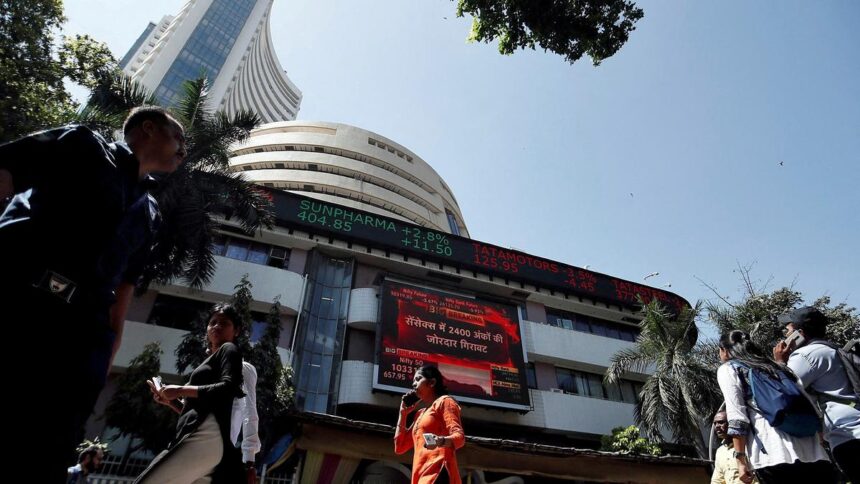
rough edges: India needs to eliminate administrative irritations and create a workable environment for investors and entrepreneurs. | Photo credit: Reuters
The current capital market environment is very positive, with prevailing bullish sentiment. We are in the midst of one of the most important revolutions, as retail investors, who have historically stayed away from the market, are now participating in unprecedented numbers. Demat accounts to grow from 40 million (4 crore) in 2020 to 160 million (16 crore) today.
This surge was catalyzed by the streamlined digital onboarding process that emerged during the COVID-19 pandemic. This process allows investors to open a Demat account and start investing in just a few minutes. As a result, the market saw a dramatic increase in new investors, with monthly numbers rising from 3,00,000 to 4 million. Last month, 4.2 million new accounts were opened, thanks to the improved digital infrastructure.

In the last four years, the retail investor base has increased from 40 million to 163 million, with a forecast to reach 300 million (30 Crore) in the next 3 to 4 years. This influx of retail investors means that a significant portion of household financial savings is now channeled into the market. A key catalyst for this incredible growth one of SEBI’s important initiatives, which is prioritizing capital formation, makes it easier for retail investors to invest and ensures low costs, thereby maximizing net profits for even the smallest investors.
India is currently witnessing a revolutionary phase in equity investment. As this capital is injected into the economy, substantial growth follows. This dynamic is driven by two main groups of our economy: entrepreneurs and consumers. Entrepreneurs create what consumers want, thus driving economic growth. Previously, lack of equity hindered entrepreneurial ventures, but starting in 2020, we have a flood of equity. This shift is exemplified by the recent New Fund Offering (NFO) infusion of ₹40,000 crore, with monthly inflows now averaging ₹75,000 to ₹80,000 crore. Consequently, this results in an annual infusion of ₹9 to ₹10 lakh crore into the market, significantly boosting entrepreneurial activity and enhancing the prospects of economic development.
For entrepreneurs, this is the golden age of India, The AmritKal. With a market of 1.5 billion people in the country, the opportunities are huge. Entrepreneurs can pursue their ventures without queuing for work, supported by global equity investment in promising ideas. Access to equity also paves the way for bank loans, creating an environment conducive to entrepreneurial success.
This increase in capital is not a short-term phenomenon but a structural change in the economy. An injection of ₹8 to ₹10 lakh crore every year will have a huge effect, like diverting Ganga water to Rajasthan – initially causing floods, but ultimately leading to a green revolution in the desert. India is on the verge of an entrepreneurial revolution, if this influx is managed well. SEBI has now excelled in managing this flood of investments, ensuring an orderly flow of money.
A well regulated Indian market attracts huge investments. It is now the responsibility of the government to create policies that use these capital flows strategically. Savers, who previously sought 6 to 7% interest, are now taking equity risks, marking a significant change. The upcoming budget will reflect this transformation and make appropriate policies.
This is the right moment. India’s capital market should be leveraged for strategic advantage, especially against global competitors like China.
Budget Expectations
Our current focus may not be on finding tax cuts, but on achieving smoother tax administration. Removing bureaucratic obstacles is essential to promote growth and efficiency. Our marketplace infrastructure is robust, well-planned, and designed for optimal performance. This is one of India’s key competitive advantages – a well-developed and well-functioning capital market. The challenge before us is to use this advantage effectively for the benefit of the nation.
Just as software exports have been a godsend, the capital markets offer similar opportunities. We need to create the most efficient and reliable capital markets, attracting small neighboring countries like the Philippines, Bangladesh, Sri Lanka, Pakistan, and Afghanistan to use our markets. Why can’t India be the capital market hub for the subcontinent?
To achieve this, we need to eliminate administrative irritations and create a working environment for investors and entrepreneurs.
(Raamdeo Agrawal is Chairman & Co-founder, Motilal Oswal Financial Services)
(As told to Lalatendu Mishra)




